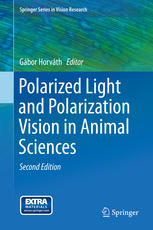

Most ebook files are in PDF format, so you can easily read them using various software such as Foxit Reader or directly on the Google Chrome browser.
Some ebook files are released by publishers in other formats such as .awz, .mobi, .epub, .fb2, etc. You may need to install specific software to read these formats on mobile/PC, such as Calibre.
Please read the tutorial at this link: https://ebookbell.com/faq
We offer FREE conversion to the popular formats you request; however, this may take some time. Therefore, right after payment, please email us, and we will try to provide the service as quickly as possible.
For some exceptional file formats or broken links (if any), please refrain from opening any disputes. Instead, email us first, and we will try to assist within a maximum of 6 hours.
EbookBell Team

4.0
66 reviewsThis book covers advances made since the 2004 Springer volume “Polarized Light in Animal Vision” edited by Horvath and Varju, but also provides reviews and synopses of some areas. Part I examines polarization sensitivity across many animal taxa including vertebrates and invertebrates and details both terrestrial and aquatic life. Part II is devoted to the description of polarized light in nature and explores how the physics of light must be taken into account when understanding how polarized light is detected by the visual system. This includes underwater polarization due to scattering; polarization patterns reflected from freshwater bodies; polarization characteristics of forest canopies; normal and anomalous polarization patterns of the skies; skylight polarization transmitted through Snell’s window and both linearly and circularly polarized signals produced by terrestrial and aquatic animals. This Part also examines polarized “light pollution” induced by anthropogenic factors such as reflection off asphalt surfaces, glass panes, car bodies, and other man-made structures that are now known to form ecological traps for polarotactic insects. Part III surveys some of the practical applications of polarization vision including polarization-based traps for biting insects, ground-based polarimetric cloud detectors and an historical examination of the navigational abilities of Viking seafarers using the sky polarization compass. The deterrent qualities of ungulate pelage to polarization-sensitive biting insects is also examined in this section.